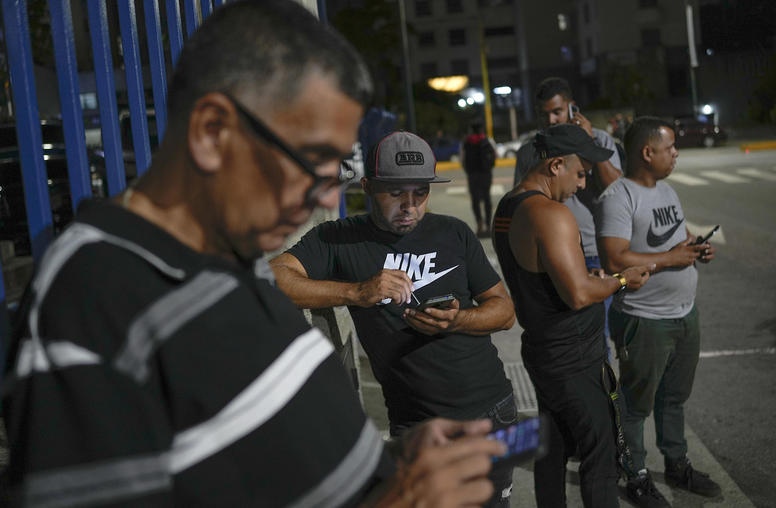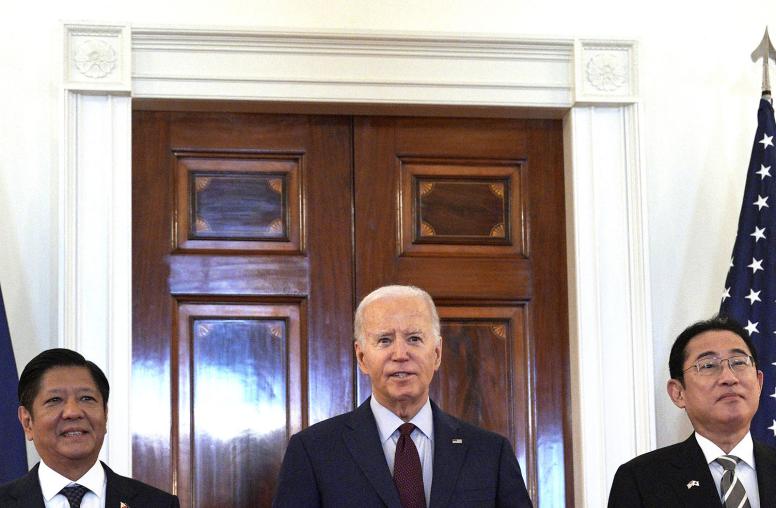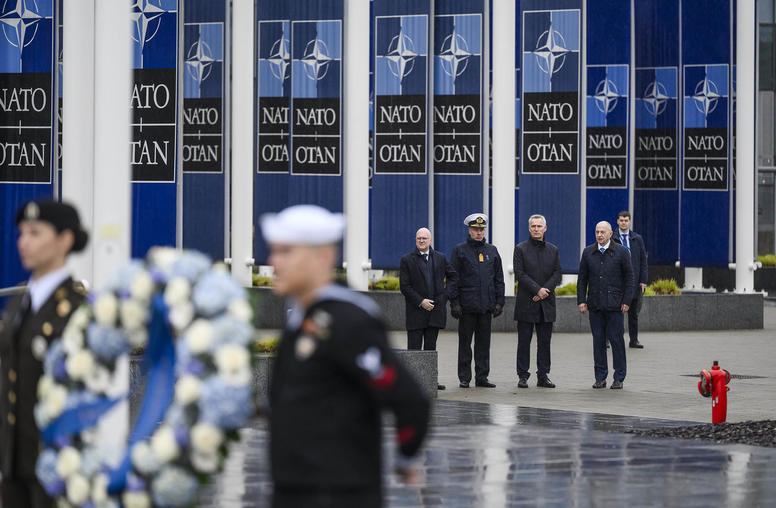Whither the Six-Party Talks?
It has been nine months since the fourth round of Six-Party Talks concluded with a joint statement of principles. Unfortunately, that statement now appears to be the high-water mark of the six-party process rather than a baseline for future negotiations.
It has been nine months since the fourth round of Six-Party Talks concluded with a joint statement of principles. Unfortunately that statement now appears to be the high-water mark of the six-party process rather than a baseline for future negotiations. Even if the prospects for near-term movement on the negotiating front appear slim, the process may still prove useful as a crisis management tool until negotiations are once again possible.
Some analysts have already declared the process dead, a judgment that in the absence of alternative measures implies tacit acceptance by all parties of a de facto nuclear North Korea. A private meeting that included lead negotiators from all the six parties in Tokyo in April appeared to confirm suspicions that the talks had stalemated as a result of North Korean objections to U.S. "economic sanctions," a warning made by the U.S. Treasury against Banco Delta Asia (BDA), a Macao-based bank, in response to alleged counterfeiting and money laundering involving North Korean customers of BDA.
Rather than stimulating progress in negotiations, the Joint Statement appears to have led most parties to redouble unilateral actions away from the negotiating table. The United States has stepped up economic pressure on North Korea and heightened vigilance in the international banking sector regarding North Korea’s alleged money laundering and counterfeiting of U.S. currency. The North Koreans continue to produce plutonium with their five megawatt reactor at Yongbyon. The Japanese have had one round of bilateral negotiations with North Korea, with no apparent success. South Korean efforts to promote the Kaesong Industrial Zone are ongoing. And the top leaders of China and North Korea have exchanged visits and redoubled aid, trade, and investment initiatives designed to stabilize and reform the North Korean economy.
What are the Alternatives?
These circumstances raise questions as to whether the Six-Party Talks process remains a viable mechanism for achieving the denuclearization of the Korean peninsula. In the context of an apparent stalemate in the six-party dialogue process, it is natural to conclude that the Six-Party Talks are dead and that there is need for a "Plan B," a set of coercive measures designed to force a strategic decision by North Korea to abandon its nuclear program. One option would involve the formal abandonment of the Six-Party Talks and the pursuit of a UN Security Council endorsement of coercive instruments to punish North Korea until it gives up its nuclear weapons program.
Other measures could include stepped-up sanctions against North Korean illegal activities; strict application of export control measures and other national laws designed to curtail North Korean counterfeiting, money laundering, and other economic activities; enhanced application of the Proliferation Security Initiative (PSI) to isolate North Korea; and more pro-actively interdicting transfers of drugs, arms, missiles, or fissile materials. Without formally abandoning the six-party process, the administration has already initiated a wide range of such activities over the course of the past year along with increasing condemnation of North Korean human rights abuses.
A Plan C?
Some critics have argued that the six-party process never had a chance to succeed in the absence of demonstrated political will at the highest levels to overcome mutual mistrust in both the United States and North Korea. The Chinese have made this argument and seem to define their mission as hosts of the six-party process by creating opportunities for the United States and North Korea to work out their differences bilaterally. These critics argue that diplomatic efforts have not been exhausted because serious diplomatic efforts to build on the progress represented by the joint statement have not yet begun.
According to this view, the United States might eliminate doubts about its intention to negotiate a solution to the nuclear issue, alleviate North Korean security concerns, and overcome North Korea’s bureaucratic rigidity by negotiating directly with Kim Jong Il, perhaps through dispatch of a presidential envoy to meet Kim Jong Il at a neutral site in China or Russia. On the other hand, some endorse extended back-channel diplomacy, like that quietly embraced by the UK as a precursor to the decision by Colonel Moammar Qaddafi to give up Libya’s nuclear program (even though Pyongyang has loudly and repeatedly rejected the "Libya model").
Or Plan D?
Another option might be to seek a negotiating format that enlarges the agenda to address the ongoing causes of confrontation between the United States and North Korea by addressing the issue of a permanent peace settlement on the Korean Peninsula. This would enfold the denuclearization of the Korean Peninsula as part of an end to the Korean War. Such an approach would likely win support from other members of the six-party process, many of which have been critical of America’s failure to negotiate seriously with North Korea.
It is likely that, given the harsh rhetoric the Bush administration has used against North Korea, only a high-level diplomatic approach is likely at this stage to convince Kim Jong Il that the United States does not seek to overthrow his regime. Such an approach is highly unlikely given that the Bush administration appears to have judged that there is little likelihood that North Korea will negotiate away its nuclear weapons capability no matter what the incentives or pressures might be.
Negotiation/Coercion Versus Crisis Management
To date, the six-party process has been seen primarily as a vehicle for enhanced negotiation or, alternatively, for enhanced coercion (in those rare instances when the United States has been able to put together a five-versus-one stand on a particular issue, such as the warning to Pyongyang not to conduct a nuclear test). But, despite its limitations and despite the Bush administration’s judgment that North Korea is highly unlikely to negotiate away its nuclear weapons program, the six-party framework may still have an important role to play as a mechanism for crisis management, in addition to being (or until such time as circumstances permit it to be) a vehicle for multi-party negotiations.
From this perspective, there is little concern that "failed diplomacy" or even extended periods of inactivity will result in the demise of the six-party process; as long as the framework continues to exist, the North Korean nuclear crisis remains "under control." In the absence of a North Korean strategic decision, the Bush administration appears to judge that further efforts to negotiate the abandonment of North Korea’s nuclear program are likely to be fruitless. But the current framework can manage the problem until conditions are more propitious for serious negotiation.
The six-party mechanism binds the parties together in the shared objective of "the verifiable denuclearization of the Korean peninsula in a peaceful manner." It is important to stress that this objective has two components: "denuclearization" and in a "peaceful manner." For many of the parties, the latter is as important as the former. The failure of six-party diplomacy would remove a fundamental constraint on the use of military means to resolve peninsular issues, a course of action that would directly threaten Chinese and South Korean interests.
China’s fundamental interests—the need to maintain the conditions necessary to ensure regional stability—require enforcement of constraints on North Korean crisis escalation tactics, including the possibility of a North Korean nuclear test. North Korea’s attempts to test or transfer fissile materials would also threaten Chinese and South Korean interests by escalating the crisis or inviting U.S. consideration of coercive means by which to eliminate North Korea’s presumed nuclear capacity. While China is unlikely to intervene with North Korea on behalf of American nonproliferation objectives, further escalation would entail great costs for China and/or South Korea. But the demise of the six-party process would undoubtedly result in stepped up coercive maneuvers targeted at North Korea. Therefore, it is in Beijing’s (and Seoul’s, if not Pyongyang’s) interest to ensure that there is no erosion in the fundamental conditions necessary to perpetuate the six-party process.
This logic presumes that while North Korea can continue to produce fissile material at a relatively slow rate, the accumulation of such material will not buy North Korea any additional leverage as long as the six-party mechanism remains intact. (Many critics consider this to be a strikingly risky assumption, post-9/11.) The Bush administration’s presumption appears to be that North Korean actions to circumvent such a crisis management mechanism would entail costs and risks too high for the leadership to contemplate.
China is the party with the most leverage to determine North Korea’s fate and the critical enforcer of a "red line" beyond which North Korea crosses at its peril. Thus, all parties have a stake in continuing the Six-Party Talks, initially as a crisis management mechanism and eventually as a vehicle for negotiation with North Korea. However, despite pressure in some quarters for "serious negotiations" or arguments that perpetuation of the status quo is unbearable, Washington-based policymakers deem a mechanism that upholds the status quo to be preferable to a bad compromise or a "second Agreed Framework." Instead, the six-party framework’s primary value is as a venue for promoting coordination of coercive measures designed to force North Korea to return to the negotiating table and give up its nuclear weapons programs.
Constraints and Prerequisites
This logic may presume that eventually a weakened North Korea that is increasingly penetrated by global economic influences and information flows will have little choice but to negotiate the end of its nuclear program on terms favorable to the United States, but the six-party logic also entails constraints for the United States, as was illustrated by the outcome of the September 19, 2005 Joint Statement, including discussion of the provision of a light water reactor to North Korea "at an appropriate time."
A primary constraint lies with the expectation among the other parties to the Six-Party Talks that the purposes of the talks cannot be fulfilled unless the United States is willing to put forward concrete and constructive proposals at the negotiation table. All parties expect these proposals to address the issues of verification, denuclearization, economic and political incentives, and security assurances for North Korea in a positive manner.1
It is evident from recent attempts to jump-start the six-party process in Tokyo that the perception that neither the North Koreans nor the Americans are pursuing good-faith negotiations serves not only to vitiate the role of the six-party process as a vehicle for negotiations but also erodes its utility as a crisis management mechanism. If there is widespread doubt about the Six-Party Talks as a viable vehicle for negotiations, then such views will erode the talks’ ability to play an effective crisis management role. Perceptions on the part of the other members of the six-party process that Washington is unwilling to negotiate takes the spotlight off of Pyongyang’s unwillingness to make that "strategic decision" embodied in the consensus objective of denuclearizing the Korean Peninsula in a peaceful manner.
Ultimately, serious progress in the six-party negotiation process will also require bilateral negotiations with North Korea. A critical prerequisite, however, will be a process to coordinate the application of dialogue and pressure involving both South Korean allies and a China that may not share the same long-term strategic vision for the Korean Peninsula with most Americans (and Japanese). Perhaps the most telling and self-defeating signal the Bush administration is sending to its partners under current circumstances is its perceived unwillingness to engage in detailed policy coordination discussions necessary to support progress in negotiations.
Until the United States, South Korea, and China concur on a process and outcome for achieving denuclearization on the Korean Peninsula, it is highly unlikely that North Korea will be prepared to make tangible progress toward that objective. The price of Chinese and South Korean cooperation in pursuing coercive measures toward North Korea is likely to be an understanding that the United States is also willing to keep North Korea stable and promote gradual reforms. In order for this coordination challenge to be effective, it will be necessary for all the parties involved, including North Korea, to make strategic decisions regarding the future of nuclear weapons on the Korean Peninsula.
Notes
1. PacNet #48 "Six-Party Talks: Defining a Realistic Roadmap for Success," Nov. 7, 2005, addresses the need for a negotiated roadmap for dealing with the North Korean nuclear issue; Issues & Insights No. 8 - 05 — August, 2005, "The Six-Party Talks: Developing a Roadmap for Future Progress," explores some of these issues in further detail; both are available at www.pacforum.org.
This USIPeace Briefing was written by Scott Snyder, a senior associate at the Pacific Forum CSIS and the Asia Foundation and a PanTech Fellow at Stanford University; Ralph Cossa, president of the Pacific Forum CSIS; and Brad Glosserman, executive director at Pacific Forum CSIS, as part of a joint project with the United States Institute of Peace. The views expressed here are not necessarily those of USIP, which does not advocate specific policies.
About the Korea Working Group
The United States Institute of Peace Korea Working Group, established in 1993, offers an ongoing forum for discussion and development of practical policy options for officials in the executive and legislative branches of government. The group meets throughout the year to explore issues ranging from North Korea’s nuclear program to its economic decline, the Six-Party Talks, and the state of the U.S.-South Korea alliance.
The United States Institute of Peace is an independent, nonpartisan institution established and funded by Congress. Its goals are to help prevent and resolve violent international conflicts, promote post-conflict stability and development, and increase conflict management capacity, tools, and intellectual capital worldwide. The Institute does this by empowering others with knowledge, skills, and resources, as well as by directly engaging in peacebuilding efforts around the globe.




